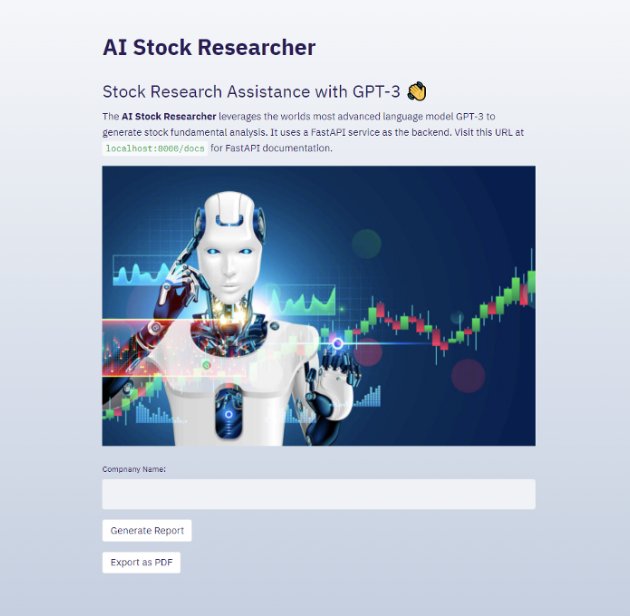20 New Ways For Choosing AI Stock Predicting Websites
20 New Ways For Choosing AI Stock Predicting Websites
Blog Article
Top 10 Tips For Evaluating The Data Quality And Sources Ai Analysis And Stock Prediction Platforms
Analyzing the quality of the data and sources that are used by AI-driven stock prediction and trading platforms is crucial for ensuring reliable and accurate information. A poor quality of data could lead to flawed predictions, financial losses and mistrust in the platform. Here are the top 10 guidelines for assessing the quality of data as well as sources:
1. Verify the data sources
Verify the source of the data Check that the platform is reliable and well-known data providers (e.g., Bloomberg, Reuters, Morningstar, or exchanges such as NYSE, NASDAQ).
Transparency. A platform that is transparent will be able to disclose all sources of its data and update them regularly.
Avoid dependence on one source Most reliable platforms combine data from many sources to reduce the chance of biases.
2. Examine the quality of data
Real-time and. Delayed Data: Check if the platform is providing real-time data or delayed information. Real-time data is vital in order to facilitate trading, while delayed data is sufficient to provide long-term analysis.
Make sure you are aware of the frequency at which you update data (e.g. hourly or minute by minute or even daily).
Consistency of historical data: Ensure whether the historical data is clear of any gaps or anomalies.
3. Evaluate Data Completeness
Check for missing data: Check for gaps in data from the past as well as tickers that are not working or insufficient financial statements.
Coverage: Ensure your platform has a wide variety of indices, stocks and other markets that will be pertinent to your trading strategy.
Corporate actions - Check if the platform account stock is split. Dividends. mergers.
4. Accuracy of test data
Cross-verify data: Compare the platform's data with other reliable sources to ensure that the data is consistent.
Error detection: Look for outliers and erroneous values or financial metrics that have not in line with.
Backtesting. Strategies can be tested back using historical data and compare the results to what you expected.
5. Consider the Data Granularity
Detail: Make sure the platform offers granular data like intraday prices, volume, spreads between bid and ask, as well as depth of the order book.
Financial metrics: Determine if your platform offers detailed financial reports (income statement and balance sheet) as well crucial ratios, such as P/E/P/B/ROE. ).
6. Check for Data Cleaning and Processing
Normalization of data is crucial to ensure consistency.
Outlier handling - Check out how your system handles anomalies or data that's outliers.
Data imputation is not working: Find out whether the platform has solid methods to fill in the missing data points.
7. Examine data consistency
Make sure that all data is aligned to the same timezone. This will prevent any discrepancies.
Format consistency: Make sure the data is presented consistently.
Cross-market compatibility: Verify that the data from different markets and exchanges are synchronized.
8. Assess Data Relevance
Relevance for trading strategy - Make sure that the data corresponds to your style of trading (e.g. quantitative modeling and quantitative analysis, technical analysis).
Features Selection: Find out whether the platform has pertinent features, like economic indicators, sentiment analysis and news information which can improve the accuracy of your predictions.
Examine Data Security Integrity
Data encryption: Ensure that your platform uses encryption to protect data during transmission and storage.
Tamper-proofing: Verify that the data is not altered or changed by the platform.
Conformity: Ensure that the platform is compatible with all applicable laws regarding data protection (e.g. GDPR, the CCPA).
10. Transparency of the AI model's transparency on the Platform could be verified
Explainability: Make sure the platform provides you with insights into the AI model's use of data to make predictions.
Bias detection: Determine that the platform monitors and corrects biases that exist within the models or data.
Performance metrics. Evaluate performance metrics such as precision, accuracy, and recall to assess the reliability of the system.
Bonus Tips
Reputation and reviews of users - Research the user feedback and reviews to assess the reliability of the platform and data quality.
Trial time. You can try the demo or trial for free to test out the platform and its features.
Customer Support: Make sure that the platform provides an effective support system that allows customers to help resolve issues with data.
Follow these tips to assess the data source and quality of AI software for stock prediction. Make informed choices about trading based on this information. Have a look at the top rated free ai investing app for site tips including best ai stocks to invest in, investment ai, invest in ai stocks, ai investing tools, ai trading bots, ai trading, ai trading software, best ai stocks to invest in, ai for investing, best copyright prediction site and more.
Top 10 Tips For Evaluating The Ability To Scale Ai Stock Predicting/Analyzing Trading Platforms
Scalability is an important element in determining whether AI-driven platforms for stock prediction and trading can cope with the increasing demand of users, volume of data and market complexity. Here are 10 top strategies for evaluating scaling.
1. Evaluate Data Handling Capacity
Tips : Find out whether the platform has the ability to analyze and process huge databases.
Why: Scalable systems must handle the volume of data that is growing without performance degradation.
2. Test the Real-Time Processing Capabilities of your processor
Tip: Check the capability of the platform to process real-time information streams, like live stock prices, or breaking news.
The reason: The immediate analysis of your trading decisions is essential since delays can cause you to missing opportunities.
3. Check the Cloud Infrastructure for Elasticity
Tips - Find out if a platform uses cloud-based infrastructure, e.g. AWS or Google Cloud.
The reason: Cloud platforms are flexible, and can be scaled up and down based on demand.
4. Algorithm Efficiency
Tip 1: Examine the computational performance of the AI models being used (e.g. reinforcement learning deep learning, reinforcement learning, etc.).
Reason: Complex algorithms consume a lot of energy. Thus optimizing them can assist you in scaling.
5. Examine Parallel and Distributed Computing
Verify if your platform supports the concept of distributed computing or parallel processing (e.g. Apache Spark, Hadoop).
The reason: These advanced technologies provide faster data analysis and processing across multiple nodes.
Examine API Integration and Interoperability
TIP : Make sure the platform can integrate with other APIs, such as market data providers or brokerage APIs.
Why: The platform can adapt to changing market conditions and data sources because of seamless integration.
7. Analyze User Load Handling
Tip: Simulate large user traffic to see how the platform does under high load.
What's the reason? A platform that can be scalable should maintain performance even when the amount of users grows.
8. Assess the effectiveness of the model's retraining and adaptability
Tip: Determine how often and how effectively AI models have been re-trained using new data.
The reason is that markets change constantly, it is important to update models regularly.
9. Check Fault Tolerance (Fault Tolerance) and Redundancy
Tip: Check that the platform is equipped with failover mechanisms and redundancy in case of hardware or software failures.
Why is downtime so costly for trading. Therefore, fault tolerance is essential to scalability.
10. Monitor Cost Efficiency
Tip: Analyze the cost of expanding the platform, such as cloud resources, storage for data, and computational power.
Why? Scalability should come at a cost that's affordable. This means balancing efficiency against cost.
Bonus Tip: Future-Proofing
Assuring that the platform will be able to handle the latest technologies (e.g. advanced NLP quantum computing) and regulatory changes.
By focusing your attention on these elements and focusing on these factors, you can evaluate the capacity of AI prediction as well as trading platforms. This guarantees that they will be robust and efficient and ready for further expansion. Read the top ai copyright signals for more examples including ai stock prediction, trade ai, ai investing tools, stock market ai, ai bot for copyright trading, copyright ai bot, ai copyright trading bot, ai chart analysis, best ai copyright to buy, ai trader and more.